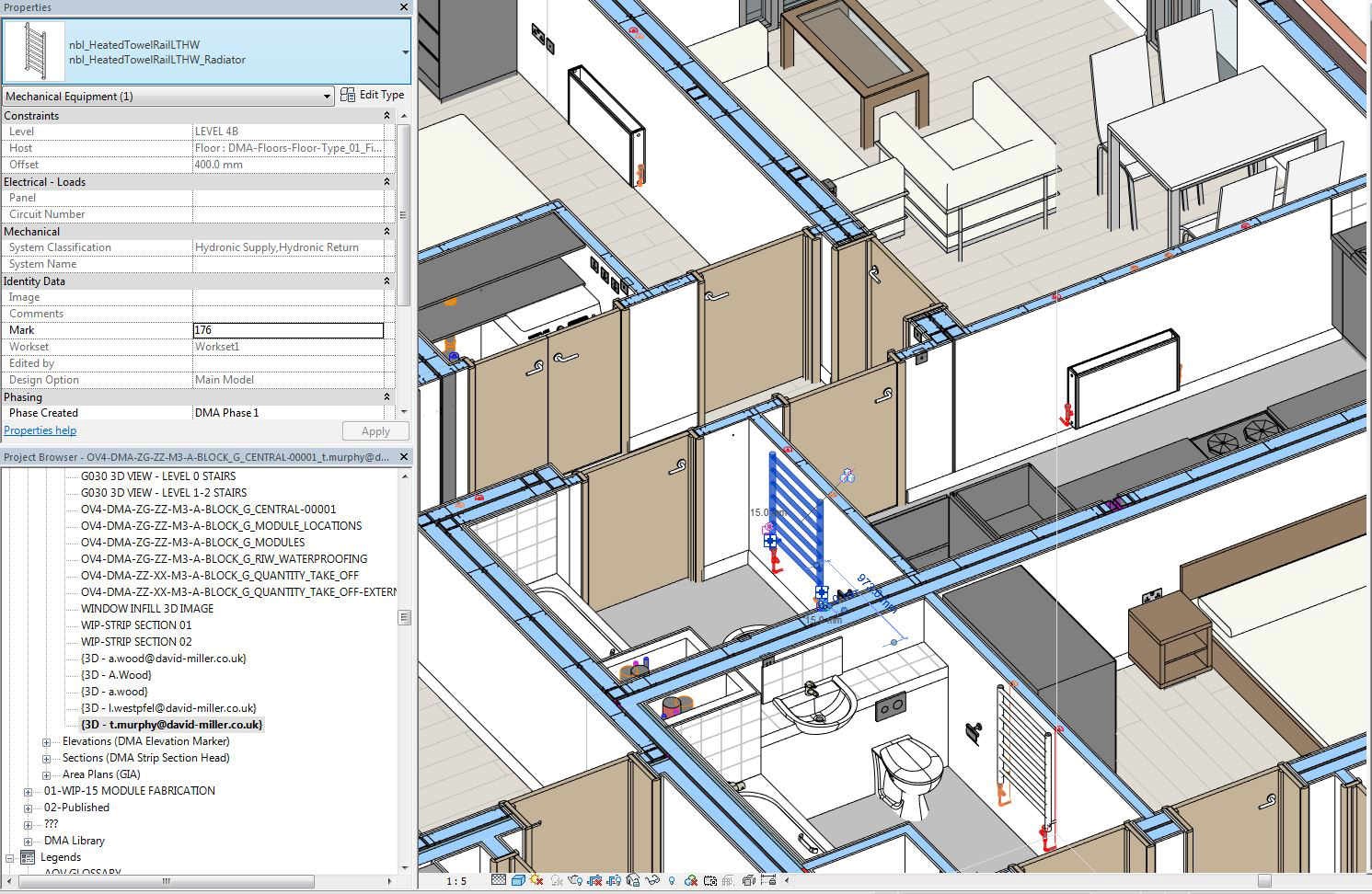

What is a BIM object?
(If you aren’t familiar with the BIM process, I suggest you have a look at our last blog that gives you a brief overview)
BIM objects are digital representations of products that can be placed into BIM models. Simply put, an architect or designer can take your product and see how it interacts with their design. These models contain the model itself, along with all of the associated metadata. This includes details like materials, model numbers and service information.
During the design process, the digital building will usually contain generic models that are included with the software. They are typically simple models that act as a placeholder to inform the design process, and give a sense of the look and feel of the building. They contain all of the necessary parameters and properties already built in.
Once the design process is complete and the construction phase begins, these generic models can be swapped out with manufacturer specific models. These models are typically less customisable, but contain more accurate information about installation, collision detection and coordination among the trades required to install them.
Creating a BIM Object
To create a BIM ready object, you can create a “BIM version” of the same 3D model you used to design your product. Most of the major 3D modelling packages have the ability to automatically strip down all of the detail that is not necessary for the AEC firm, and export it in a BIM friendly format to create a much smaller file that is easier to handle.
This works well for a product with only one size, but not so well for configurable products. For a configurable product, the manufacturer has to pre-build each possible variation of size, material and finish into the model and export them and maintain them all separately. This is a particularly time consuming process when you have a large range to offer. A better solution is to strip the model of all detail in the same application it was designed in, leaving only the basic dimensions and materials. This model can then be supplied to the AEC firm, who can configure it as they see fit for the project, and export it into the BIM model themselves. This method allows them to see all of the variations quickly with much less manual work for you.
Each of these methods gives you full control over your intellectual property, allowing you to share only the information they require to make sure it fits into their design. By converting your detailed designs into simple and lightweight files, they are fast and easy for your customers to integrate into their BIM models. An AEC firm is far more likely to choose a product that fits into their existing workflow, than go through the hassle of trying to create it themselves.